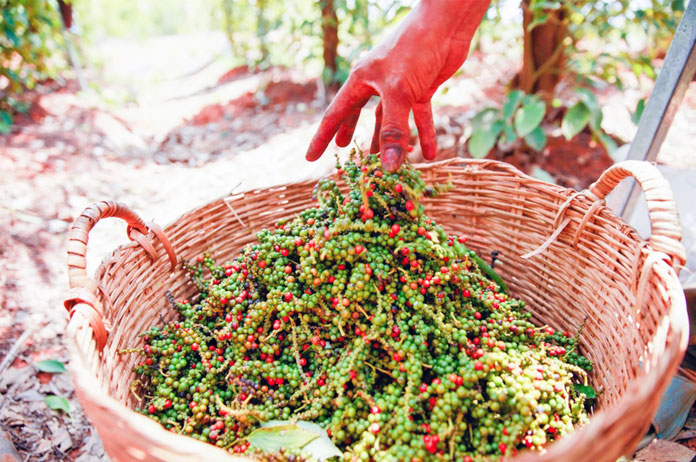Cambodian Pepper Farmers Seek New GI Listings

Pepper production inched up to close to 12,000 tonnes last year with cultivation on 6,124 hectares, but unstable prices have led to calls for geographic indicator (GI) certificates for a range of peppers.
The eastern Thbong Khmum province is the leading pepper producer, growing 8,566 tonnes last year. This represented 72 percent of the total production, according to a report from the Agriculture Ministry. Kampot province, which gets GI recognition in Europe for its pepper, cultivated about 87 tonnes last year.
Hean Vanhan, director-general of the directorate of agriculture, said land used for cultivating pepper had increased in line with the surge in demand for the product. “Because of the rice surplus, rice farmers have now turned to planting pepper,” he said.
A large amount of pepper is exported to Vietnam, while a small amount of pepper, which is mostly from Kampot, is shipped to the EU and other markets, he said. However, the market price of black pepper has been plunging, pushing officials to conduct studies on the unique tastes of pepper in other provinces for GI listing. He hoped the study would be finished soon.
Nguon Lay, president of the Kampot Pepper Promotion Association, welcomed the plan to get GI listing for pepper in other provinces. “I am happy to share knowledge about how to prepare the documentation for a GI status application,” he said. “Getting GI status gives our pepper a stable price, but it is difficult to get GI status because its quality differs from one area to another.”
The demand for GI-listed pepper has increased, and farmers and investors are starting to move into this type of farming, he added. According to Lay, black pepper from his association was sold for $15 per kilogram, with red and white pepper selling at $25 and $28 per kg. From 2013, pepper production increased about five-fold to 11,819 tonnes in 2016. Land under cultivation went up from 381 hectares in 2013 to 6,124 hectares last year.